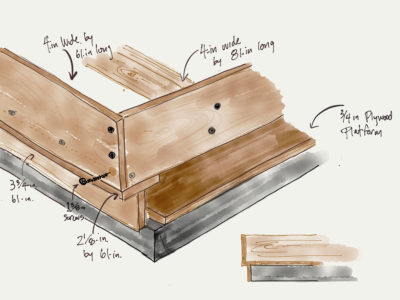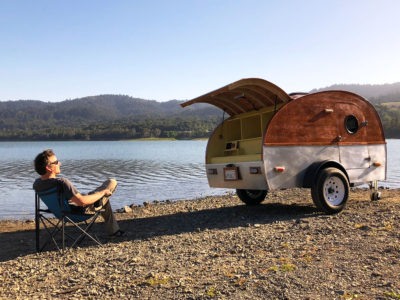Fail Fast: Designing your Teardrop Trailer as you go



Start with a 'plan.'
When I built my handmade teardrop trailer I came up with my own approach to construct it based on my available tools, materials, and shop space. How you approach your build might be different based on your situation. Part of my approach is to keep it loose, especially when it comes to the dimensions.
I’ve never been one for following instructions, even my own, so when I say “plans” I really mean a set of rough measured drawings and construction details to guide me through the general construction process of a project.
This approach leaves some breathing room for on-the-spot decision making that can lead to stronger, more reliable construction, or a faster way to complete a process. Not being wedded to plans also makes it a lot easier to absorb your mistakes; when you make a bad cut or design decision you won’t feel so bad scrapping it and starting over.
Embrace your mistakes.
Part of the process of building without plans is that you can make mistakes and not really know how you got there. That was the case with the kitchen galley hatch. My first attempt at building a kitchen galley hatch ended in complete failure, with the parts imploding in a dramatic moment captured here by my trusty Canon 70D camera in series of images for a chapter photo shoot that didn’t go as planned.
These three photos never made it into the book. For good reason When the page count is limited, there’s no room for failure. But in design, failure plays an important role.
It turns out, when I installed the upper cabinets in the kitchen galley, I didn’t pay attention to how close it was positioned to the edge and how it would impact the hatch. You can see I first tried cutting a notch into each of the ribs so that it cleared the cabinets when closed. As I labored away all weekend cutting and joining the parts, I didn’t know how bad of a design decision I made.
As I began attaching the redwood paneling to the hatch framing one by one, the pressure from the bend gradually grew greater and greater as I went down the line, until suddenly BANG! SNAP! CRASH! the notched section of the hatch gave way. With the glue still wet I frantically attempted to regain control of the situation. My biggest, strongest clamps came out from the cobwebs. Wrestling with the frayed parts, mind racing for solutions.
From failer, success emerges.

Eventually that successful solution emerged. The kitchen galley hatch took shape into a strong and sturdy framework that was lightweight, waterproof, and functional. That’s the process I finally documented for my book.
Still, my failure was just as important as my success, and maybe even more so.
